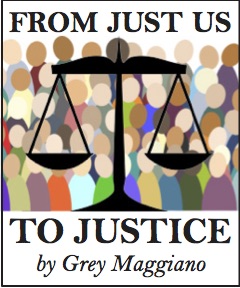 By Grey Maggiano
By Grey Maggiano
When you move to Bolton Hill, an unspoken question lingers in your mind for the first few months, maybe even years, that you live here.
“How does this place exist?”
This question takes different forms. How does a neighbor get to be so friendly? Do people really sit on their stoops and talk to each other? Do moms and dads really go out of their way to watch kids, pick up dinner, play in the park, organize activities? And as a new resident with two young children I am happy to say the answer to all of those questions is “Yes!” Bolton Hill really is a special place. A unique community that exists sometimes as a village in and of itself, where neighbors really will let you borrow a quart of milk (or more likely a six-pack of beer).
But there is another side of this question that sits a bit lower, and is a bit more uncomfortable. “How does this place exist?”—when neighborhoods on every side have been ravaged by drugs, crime, white (and black) flight and the dereliction of the city? How have these homes stayed so well preserved? How do people feel safe on the streets? How is it that the shops are devoid of bullet-proof glass, that the parks safe and green and well kept?
A challenging reality for all of us who live here is that the answer to that question is rooted in a history of racism, Lost Cause pro-Confederate movements, pro-segregation movements, neighborhood covenants, urban renewal and even today, the New Jim Crow that Michelle Alexander writes so eloquently about.
As a priest and as Pastor at Memorial Episcopal Church, I am keenly aware of this reality because for many years, members of our parish propagated this way of thinking and acted to keep the neighborhood “white.” I am also keenly aware of the importance of telling the truth about our history in order to chart a new course for the future of Bolton Hill, and perhaps for greater inner-West Baltimore.
This past January, Memorial Church began exploring the history of racism within our parish. At the time, I had no idea how far the tentacles would reach. But as we uncovered more and more stories we realized that the story of racism at Memorial is also the story of racism in Bolton Hill and to some extent, the greater Mt. Royal District—which originally extended from Dolphin to Druid Hill Park and from Mt. Royal to Pennsylvania Avenue.
The continued shaving-off of pieces of that neighborhood until we got “Bolton Hill”—a name only adopted in twentieth century—was part of an effort to keep the so-called “neighborhood” white.
A few of you may be asking, “Why are we talking about race? In a community newsletter?”
Perhaps it’s because that’s where these conversations should start—not with big, national-level ideals floated among strangers, but among people who live next door to each other, see each other in the parks and on the sidewalks and at the grocery store.
The only way our national dialogue around race will get any better is if we can tell the truth about our past and have honest conversations about our future with the people who live closest to us. And those conversations should begin here, because even though we have a historic pattern of segregation and racism in this part of Baltimore, our neighborhood is also one of the most diverse in the city.
Our neighborhood is 57% white, 32% black and close to 7% Asian. We have teachers, police officers, professors, professionals, doctors, lawyers, artists, students, musicians. Gay and straight. Religious and less so. Within our bounds we have three fixed-income senior housing buildings, a small number of fixed-income apartments, and a variety of homes ranging in value from $200,000 to close to a million dollars. We have student apartments and luxury apartments. Starter homes and the palatial mansions of Park Avenue.
This spring, during Lent, Memorial Episcopal led neighborhood residents on a Confronting Racism—Stations of the Cross Walk. It proved to be a cathartic moment for church members and neighbors who participated. Not because we suddenly “prayed racism away,” but because we were able to put words to the unspeakable actions of the past that inform who we are today, and in so doing, begin to unravel a new way of moving forward.
But we still work to do. Five-year-old black children get profiled playing in the park. MICA students are followed or stopped by police for walking home. If I am talking with a member of the Samaritan Community, neighbors will frequently check in as they walk by, asking if I am “ok.” More than a few African American neighbors express feeling like they don’t fully belong here.
So our work continues and the conversation continues, within the parish and within the neighborhood.
I hope you will consider joining in this work.
